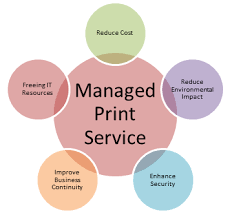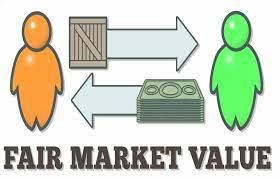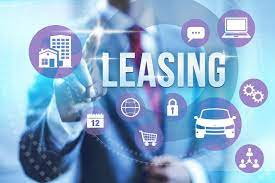In today’s fast-paced business environment, efficient document management is a cornerstone of success. One question that many small and large businesses face is whether to buy or lease printers. While both options have their merits, printer leasing is often suggested as a viable way to minimize initial investment, manage cash flow, and stay updated with the latest technology. But is leasing a printer truly worth it? In this blog post, we’ll dissect the pros and cons of printer leasing to help you make an informed decision.
Advantages of Printer Leasing
1. Lower Initial Cost
One of the most appealing benefits of leasing a printer is the low upfront cost. Rather than shelling out hundreds or thousands of dollars for a new machine, leasing a copier allows you to spread the cost over a series of manageable monthly payments.
2. Easier Budgeting
Leasing provides predictability when it comes to budgeting. You know precisely what you’ll be paying each month, which can help you manage your cash flow more effectively. Unlike ownership, where unexpected repair and maintenance costs can disrupt your budget, leasing often includes such services as part of the package.
3. Access to Latest Technology
Technology evolves quickly, and the features that were considered top-notch a few years ago may now be outdated. Leasing gives you the flexibility to upgrade to newer models at the end of your lease agreement or term, ensuring that you always have access to the latest features and best performance.
4. Tax Benefits
In many jurisdictions, leasing payments are considered a business expense and are therefore tax-deductible. This can result in significant tax savings on lease agreements, effectively reducing the overall cost of the lease.
5. Free Up Capital
By your existing lease or opting for a lease, you preserve capital that can be invested in other areas of your business. Whether it’s marketing, hiring new staff, or purchasing inventory, having extra cash on hand is never a bad idea.
Disadvantages of Printer Leasing
1. Long-Term Commitment
Leasing contracts typically last for a lease period of several years, requiring you to commit to a machine for a substantial period. If your needs change or if the printer becomes unreliable, you might be stuck with it until the lease term is up.
2. Total Cost
Although the initial cost of leasing is lower, the total amount paid over the life of the lease may be higher than if you purchased the printer outright. This discrepancy becomes even more pronounced if you continue leasing for many years, effectively “paying off” the printer several times over the end of the lease.
3. Lack of Ownership
At the end of a lease term, you have nothing to show for lease early on in terms of asset ownership. While you can opt to buy the printer at a depreciated cost, if you had purchased it upfront, you would own an asset that could be resold to recoup some of your investment.
4. Potential for Unused Features
Because leased printers often come with the latest technology, you may end up paying for features you don’t actually need or use. This can result in wasted resources and a higher monthly payment than necessary.
5. Contractual Obligations
Lease contracts with leasing companies can be complex, often with clauses for minimum print volumes, early termination fees, and maintenance conditions. Failing to meet these requirements could lead to additional charges or penalties.
So, Are Printer Leases Worth It?
The answer to this question largely depends on your specific needs and circumstances. If you’re a small business with limited capital or a startup that needs to manage cash flow tightly, leasing equipment can be an attractive option. On the other hand, if you’re looking for a long-term investment and have the capital to make an upfront purchase, buying might be the better route.
Things to Consider:
- Usage: Evaluate your printing needs. Do you require advanced features or will a basic model suffice?
- Budget: Examine your financials to see if you can afford the upfront cost or if monthly payments would be more manageable.
- Growth: If your business is growing rapidly, leasing can offer the flexibility to upgrade to a more advanced machine as your needs evolve.
What Are Managed Print Services?
Managed Print Services refer to the complete management of your company’s printing needs by a third-party provider. These services can range from maintaining and supplying your printers to full-scale print audits and software solutions that control and monitor your companies entire print environment.
Key Benefits of Managed Print Services
Cost Savings
Perhaps the most compelling advantage is cost savings. Printing can be a hidden but significant expense in many organizations. MPS helps identify inefficiencies and redundancies in your current print environment, potentially saving you a considerable amount of money.
Improved Efficiency
With MPS, your business can improve its overall efficiency by automating mundane tasks such as ordering supplies or servicing printers. This leaves your employees free to focus on more essential tasks.
Sustainability
Managed Print Services often include sustainability initiatives, like recycling programs for toner cartridges and optimizing printers for energy efficiency, thereby supporting your company’s green initiatives.
Enhanced Security
Security is often overlooked in print environments. MPS providers use advanced software to secure your print network, ensuring that sensitive documents are protected from unauthorized access.
Flexibility and Scalability
As your business grows, your print needs will change. Managed Print Services can easily adapt to your evolving business needs, providing a scalable solution that grows with your business.
How Does It Work?
Print Audit
The first step in implementing an MPS solution is usually a print audit. The provider will assess your current print environment, identifying the number and types of printers you have, how much they’re being used, and what it’s costing you.
Customization
Based on the audit, the MPS provider will develop a tailored solution that aligns with your business objectives. This might involve consolidating devices, upgrading to more efficient models new equipment, or implementing print tracking software.
Ongoing Management
Once the printer lease new print environment is in place, the MPS provider takes care of maintenance, supplies, and any necessary repairs, often proactively identifying and solving issues before they become a problem.
Reporting and Review
Most MPS solutions include regular reporting and review meetings to assess performance and identify areas for further optimization.
Is Managed Print Services Right for Your Business?
If you haven’t assessed your printing needs and costs in some time, chances are you could benefit from MPS. Businesses of all sizes and across various industries can take advantage of Managed Print Services, particularly if they have complex print needs that involve multiple devices and locations.
What is Fair Market Value?
Fair Market Value is the estimated price of an asset when both buyer and seller are knowledgeable, willing, and unpressured, and when the asset is offered in an open and competitive marketplace. Simply put, it’s what a willing buyer would pay a willing seller, both being reasonably informed and neither being compelled to buy or sell.
What is Cash Flow?
Cash flow refers to the net amount of cash and cash equivalents that flow in and out of a business during a specific period, usually defined as a month, quarter, or year. It is a key indicator of a company’s financial health and liquidity. Cash flows can be categorized into three main types:
- Operating Cash Flow: This includes revenues and expenses directly related to the production and sale of goods or services. It’s the core business activity and usually the largest source of cash for any company.
- Investing Cash Flow: This pertains to the cash generated or used by acquiring or selling long-term assets like equipment, property, or investments.
- Financing Cash Flow: This relates to the cash generated or used from dealings with the company’s stakeholders. This can include issuing or repurchasing stock, borrowing, or repaying debt.
What is a Leasing Company?
A leasing company is a specialized financial institution that purchases assets such as vehicles, machinery, office equipment, or property and then leases them out to individuals or businesses for a specified period. The leasing company retains ownership of the asset, while the lessee pays a regular fee to use it. Once the lease term ends, the lessee usually has the option to purchase the asset, renew the lease, or return the asset.
Conclusion
In conclusion, printer leasing has its merits, especially for businesses that want to stay agile and adapt to the latest technological advancements. However, it’s crucial to read the fine print and understand your contract fully before making a commitment. Take the time to assess both your current and future needs, and weigh these against the benefits and drawbacks of various leasing arrangements to determine if it’s the right choice for you.





Recent Comments